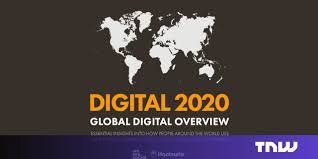Introduction
The Internet has completely transformed how we communicate, learn, shop, and entertain ourselves. In the past two decades, social media platforms like Facebook, YouTube, Instagram, TikTok, and X (formerly Twitter) have evolved into powerful tools for information sharing and global interaction. Today, billions of people log in daily to share content, express opinions, and stay updated with trends that change at lightning speed.
In this fast-moving digital age, understanding Internet and Social Media Trends is essential—not just for influencers and businesses, but for anyone who wants to stay relevant in the connected world.

The Rise of Social Media Culture
Social media began as a simple way to connect with friends, but now it shapes public opinion, marketing strategies, and global culture.
Every year, new platforms emerge, old ones reinvent themselves, and users shift between trends that define online behavior.
Key Examples:
- TikTok made short-form videos a global obsession.
- Instagram evolved from photo sharing to shopping and influencer marketing.
- YouTube remains the king of long-form content and education.
- X (Twitter) drives global conversations and breaking news.
The social media world is now a mix of entertainment, education, activism, and commerce—all on one screen.
The Power of the Internet in 2025
As of 2025, over 5.5 billion people use the Internet, and nearly 4.8 billion are active on social media platforms. This means more than half the world’s population is connected online—creating the biggest communication network in history.
From remote work and online learning to AI-powered tools and digital marketing, the Internet continues to revolutionize every aspect of daily life.

Top Social Media Trends in 2025
1. Short-Form Video Domination
Platforms like TikTok, Instagram Reels, and YouTube Shorts have become the main stage for creativity. People prefer watching 15–60 second videos rather than long posts or blogs.
Why it matters: Short-form content boosts engagement, especially among Gen Z and Millennials.
2. AI-Powered Content Creation
Artificial Intelligence is now helping creators design visuals, write captions, and edit videos faster than ever. Tools like ChatGPT, Canva AI, and Runway ML have made professional-level content accessible to everyone.
Trend Insight: AI will soon be a standard part of social media workflows.
3. Influencer & Creator Economy Boom
The “creator economy” is now worth billions. Influencers no longer just promote brands—they build their own businesses.
Example: YouTubers launching merchandise, podcasters monetizing subscriptions, and streamers earning through sponsorships.
4. Authenticity Over Perfection
Users now value real stories and raw moments more than filtered perfection. Platforms like BeReal and TikTok’s “day-in-the-life” vlogs highlight genuine content over fake glamour.
5. Rise of Social Commerce
Shopping directly from apps is the new normal. Instagram Shops, TikTok Shop, and Pinterest Shopping let users buy products without leaving the platform.
Stat: Over 70% of Gen Z consumers prefer discovering new brands on social media.
6. Privacy & Digital Wellbeing Awareness
People are becoming cautious about data privacy, screen addiction, and mental health. Many are limiting social media use or switching to encrypted platforms.
Trend: Privacy-focused apps like Signal and Telegram are gaining popularity.
7. Micro-Communities & Niche Platforms
Users are moving away from massive networks to smaller, interest-based communities on platforms like Discord, Reddit, and specialized forums.
Why it matters: Niche audiences often have stronger engagement and loyalty.
8. VR, AR & the Metaverse Experience
Virtual Reality (VR) and Augmented Reality (AR) are merging real and digital life. The metaverse trend allows users to meet, work, and shop in immersive virtual worlds.
Example: Meta (Facebook) and Apple are leading with headsets that integrate social experiences into VR spaces.
The Role of Internet Memes & Viral Culture
Memes are the universal language of the Internet. They spread faster than news and shape opinions in ways traditional media never could. Viral challenges, hashtag trends, and reaction videos drive engagement and define online humor.
Fun Fact: Some marketing campaigns now begin with a meme strategy rather than an ad plan!

Business & Marketing Impact
Brands now treat social media as their primary marketing platform. With analytics, paid promotions, and influencer partnerships, companies can reach specific audiences with precision.
Examples:
- Small businesses using TikTok for viral reach.
- Instagram reels boosting brand awareness.
- YouTube channels replacing TV ads.
Social media is not just about followers—it’s about building trust, storytelling, and community.
Challenges in the Social Media Era
Despite its power, social media comes with major challenges:
- Misinformation: Fake news spreads faster than facts.
- Privacy Issues: User data is often exploited for profit.
- Addiction: Screen time and mental health issues are rising.
- Cancel Culture: Online backlash can destroy reputations overnight.
The key is digital literacy—teaching users how to use the Internet responsibly.
The Future of Internet & Social Media
The next decade will see deeper integration of AI, VR, and real-time personalization. Instead of scrolling through feeds, users will experience content in immersive environments.
- Social media will become more interactive and predictive.
- AI algorithms will tailor every user’s online experience.
- Blockchain may help protect user identity and digital ownership.
The Internet of the future won’t just connect people—it will connect experiences, emotions, and intelligence across borders.

Conclusion
The Internet and social media have given everyone a global voice. They have redefined culture, politics, business, and entertainment. But with great power comes great responsibility.
As we move forward, embracing new trends while protecting privacy, authenticity, and creativity will be crucial. The Internet is not just a tool—it’s the heartbeat of modern society, and understanding its trends helps us navigate the ever-evolving digital world with purpose and awareness.
